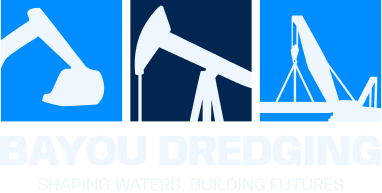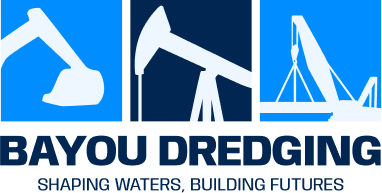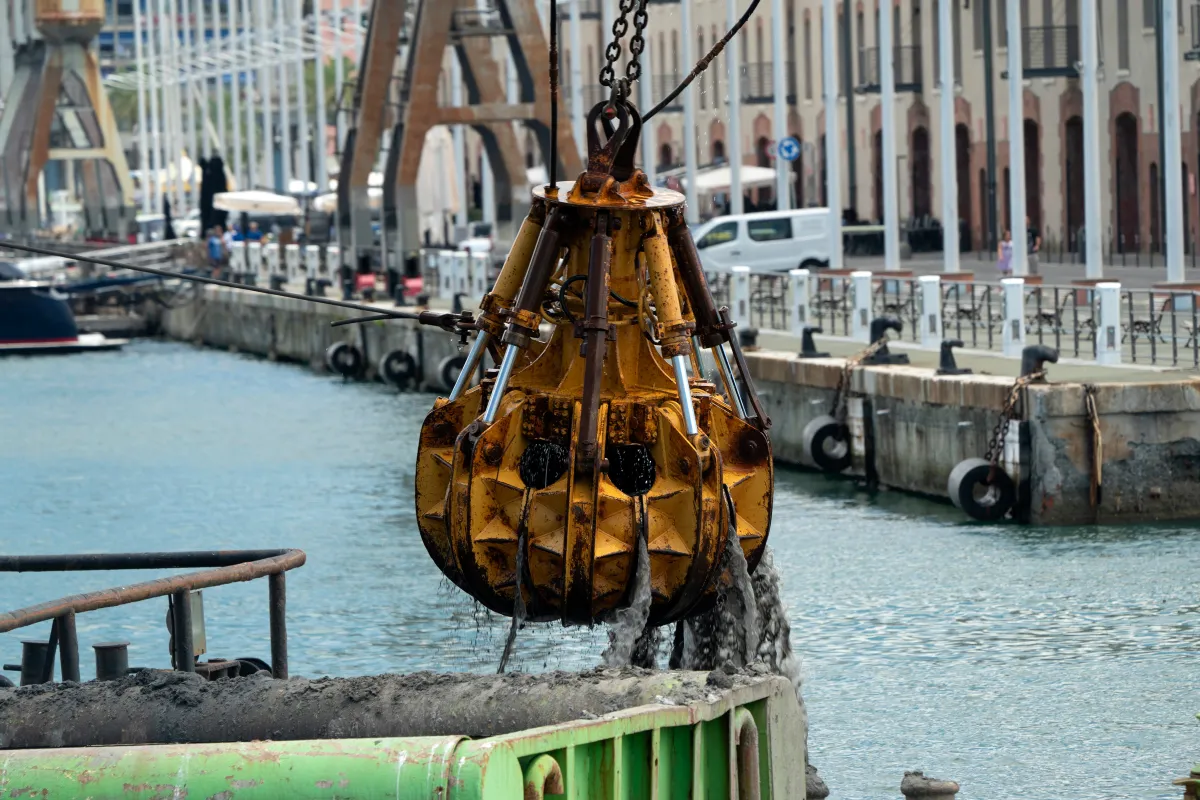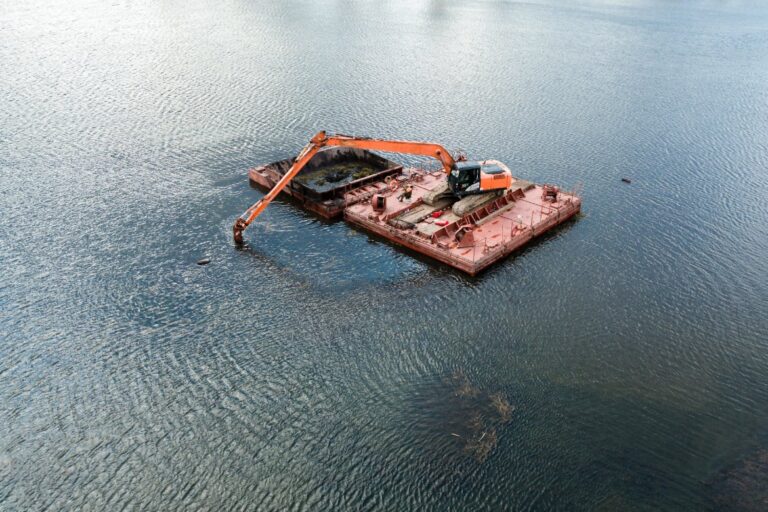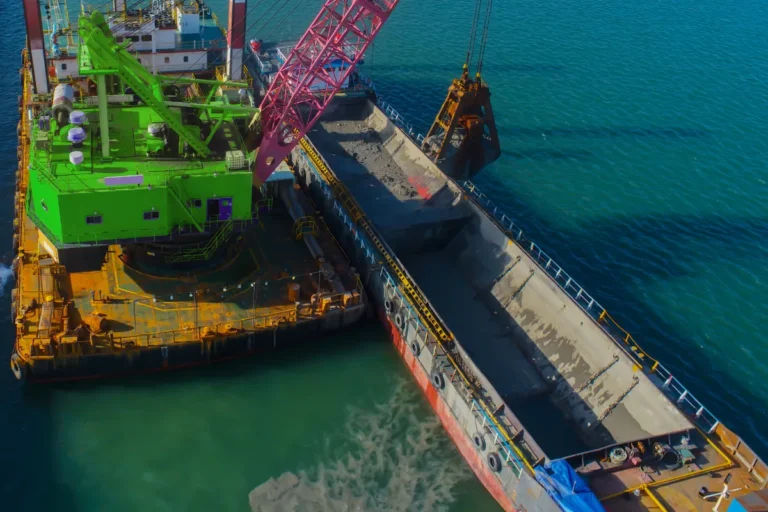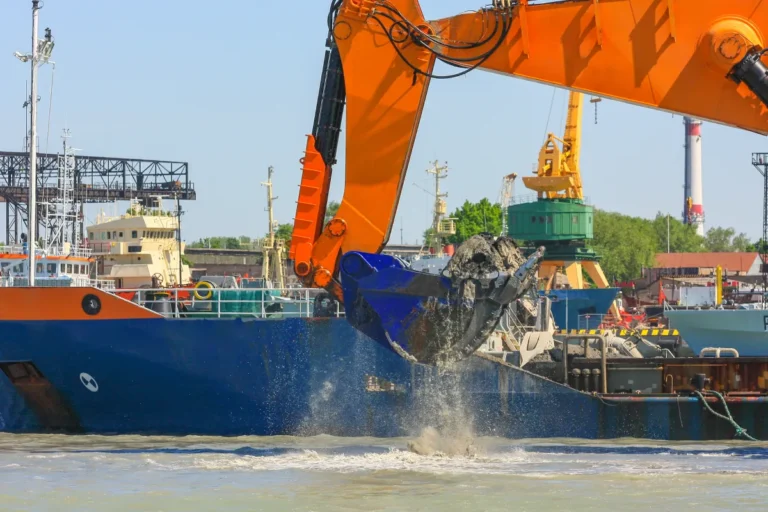Industrial lagoon sediment removal is not just about cleaning sludge; it’s about restoring an entire ecosystem that supports the smooth working of industrial operations. With time, wastewater lagoons, whether used by manufacturing plants for treating process water, food processing facilities for managing organic waste, or agricultural setups for irrigation and runoff control, collect layers of residue at the bottom. These layers can contain silt, organic matter, metals, and chemical residues, depending on the lagoon’s treatment process.
When residue is not removed, it gradually consumes the lagoon’s capacity, interrupts treatment operations, and degrades discharge quality. What was the result? Reduced efficiency, unpleasant odors, a high risk of contamination, and ultimately system failure. Removing this silt is not a simple mechanical process; it requires careful preparation, the right lagoon sediment removal dredging technology, and a thorough understanding of environmental and safety regulations.
This blog covers every aspect of the industrial lagoon sediment removal process, from sediment buildup to how experts use hydraulic and mechanical dredging equipment, manage dewatering, and ensure safe, sustainable operations.
How Sediment Accumulates in Industrial Lagoons
Every lagoon dredging has one core purpose: to collect, settle, and treat industrial or agricultural wastewater. During this process, heavier solids gradually settle to the bottom while lighter materials float or break down biologically.
Over time, what starts as a thin sludge layer can become a dense blanket of organic and inorganic matter. This includes:
- Silt and grit from process water
- Organic residues from food or agricultural waste
- Chemical precipitates from manufacturing plants
- Biological sludge from treatment processes
This accumulation doesn’t stop unless removed. It slowly eats away at lagoon volume, reducing its ability to treat water efficiently. Once the sediment layer gets too thick, the lagoon begins to behave more like a storage tank than a treatment basin.
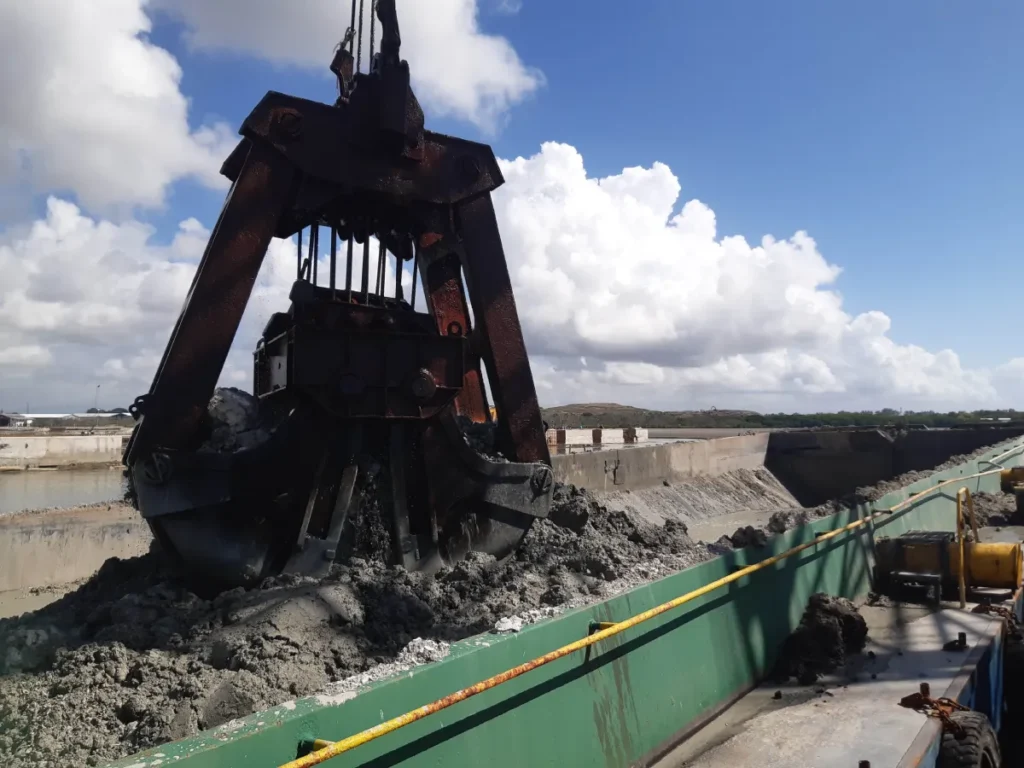
Understanding Sediment Formation in Industrial Lagoons
Sediment in lagoons doesn’t appear overnight. It builds up slowly through the natural settling of solids and materials suspended in wastewater. In an ideal scenario, lagoons are designed to allow these solids to settle at the bottom while clear water flows out. However, industrial activity constantly adds new particles, eventually forming a thick, small sludge layer.
The composition of this sludge can vary:
- Food industries often deal with organic waste, oils, and fats.
- Chemical or textile plants may accumulate heavier metals, grit, and mineral residues.
- Agricultural lagoons tend to contain manure solids, plant debris, and sand.
As this residue gathers up, it reduces the effective depth of the lagoon. A lagoon that once held millions of gallons may suddenly lose 20–40% of its holding capacity. The reduced volume affects retention time, meaning wastewater passes through too quickly to be properly treated. Over time, the balance between bacteria and oxygen exchange becomes unbalanced, leading to odor, scum, and sometimes, complete treatment failure.
Understanding the Process of Industrial Lagoon Sediment Removal
The process of industrial lagoon sediment removal begins long before the actual dredging work starts. It usually starts with a detailed site assessment to understand the type and volume of sediment that has accumulated. Technicians collect samples to determine the composition, which can be mostly organic waste, sand, or industrial byproducts.
Once the data is analyzed, a dredging plan is created. This includes defining the removal method, the type of equipment, and the disposal approach. During removal, specialized dredges or pumps are used to extract the sediment without disturbing the lagoon liner or damaging surrounding structures. The material is then dewatered, treated if necessary, and transported for safe disposal or reuse.
This step-by-step approach ensures that lagoons remain functional, environmentally compliant, and cost-efficient for long-term operations.
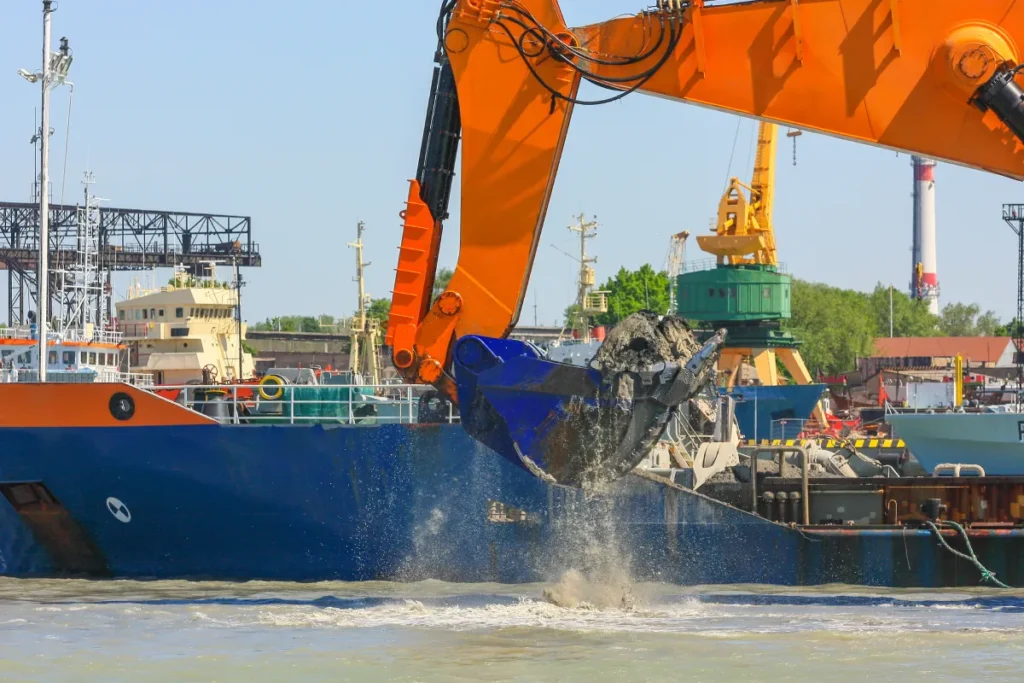
Why Industrial Lagoon Sediment Removal matters in the long run
A well-maintained lagoon operates silently and efficiently, but when it is ignored, sediment buildup can cause major operational and environmental setbacks. Regular industrial lagoon sediment removal ensures that the system continues to function as designed.
Here’s why it matters:
1. It Restores Treatment Efficiency
Sediment reduces the lagoon’s working depth and disrupts the biological process that treats wastewater. Removing sludge restores capacity and maintains a balanced oxygen transfer, both of which are essential for proper treatment.
2. It Prevents Odors and Gas Build-Up
Thick sludge layers create anaerobic conditions, where gases such as methane and hydrogen sulfide form. These gases are responsible for foul odors and corrosion of lagoon structures.
3. It Maintains Compliance with Regulations
Industrial facilities are required to meet discharge standards set by environmental authorities. Lagoon sediment removal ensures consistent water quality and avoids costly penalties.
4. It Extends the Lagoon’s Lifespan
Overloaded lagoons generally suffer from liner damage, erosion, and leakage. Lagoon dredging prolongs the lagoon’s usable life and reduces long-term capital expenses.
5. It Reduces Future Maintenance Costs
Periodic cleaning is cheaper than emergency repairs or complete lagoon reconstruction. Preventive industrial lagoon sediment removal is an investment, not an expense.
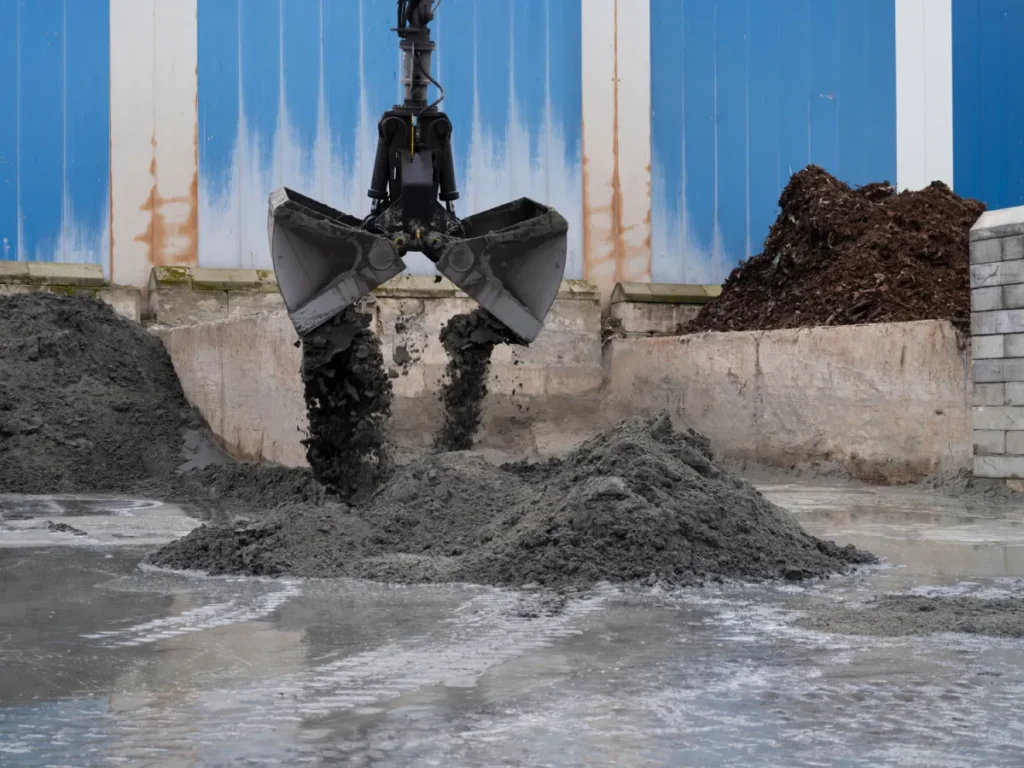
Assessing the Condition Before Dredging
Before any industrial lagoon sediment removal work begins, understanding the lagoon’s current condition is the first step to begin with. This helps in selecting the right lagoon dredging equipment, estimating costs, and minimizing risks.
Bathymetric Mapping
Using sonar technology, specialists measure the lagoon’s depth and sediment levels at multiple points. The data creates a 3D map showing where sludge is deepest or unevenly distributed.
Sediment Sampling
Core samples are taken from various locations to analyze the contents of the sludge, including its organic content, moisture levels, and any hazardous materials. This step determines disposal or reuse options.
Volume Estimation
Combining survey and sampling data allows a precise calculation of the total sediment volume. It ensures the lagoon dredging team knows how much material needs to be removed and helps plan transport and dewatering logistics.
Site Preparation
Before lagoon dredging starts, pipelines, containment areas, and access points are established. Safety checks, turbidity control measures, and environmental monitoring systems are also implemented.
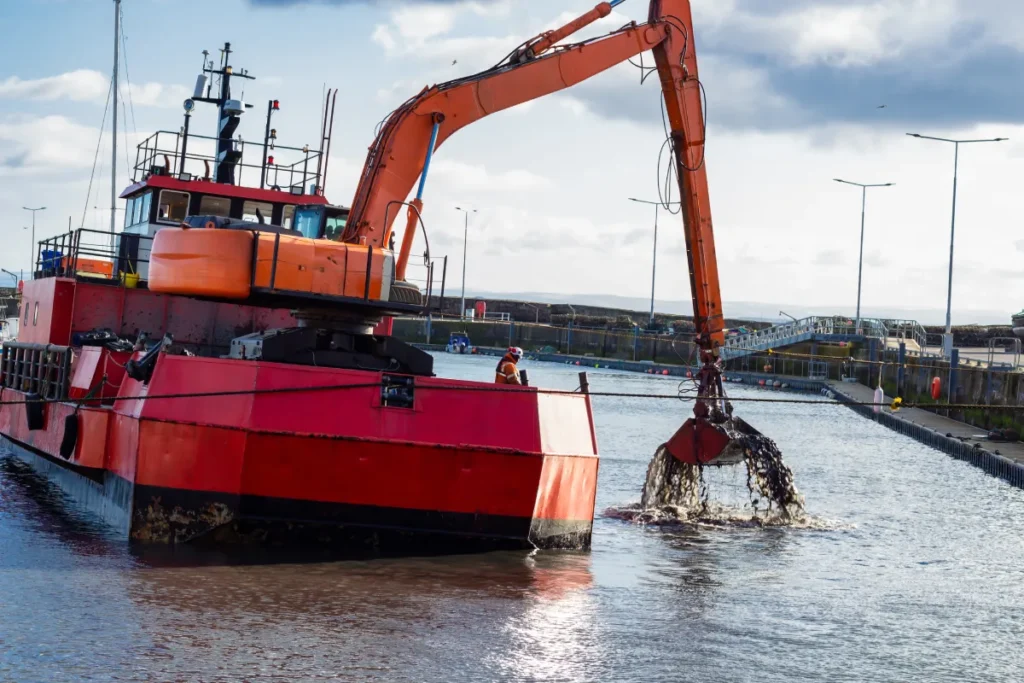
Techniques for Industrial Lagoon Sediment Removal
Industrial lagoon sediment removal is not a one-size-fits-all process. The method depends on sediment density, lagoon size, water content, and access conditions. The main techniques include:
1. Hydraulic Dredging: Continuous and Non-Invasive
Hydraulic dredging is one of the most effective ways for industrial lagoon sediment removal. It makes use of a floating dredge with a suction pump to remove a slurry of silt and water from the lagoon bottom. The sludge is transported via pipelines to a dewatering area.
The most significant benefit is that it allows lagoon sediment removal without emptying the lagoon, which means that activities may continue during dredging.
Best suited for: lagoons with soft or semi-fluid sludge, or where shutting down operations isn’t possible.
Advantages:
- Continuous removal while maintaining water levels
- Minimal disturbance to lagoon ecosystems
- Efficient for large-scale sediment buildup
2. Mechanical Dredging: For Thick, Compact Sediments
Mechanical dredging involves scooping sediment from the bottom with excavators, draglines, or backhoes. It is ideal for lagoons with coarse debris, grit, or compacted sludge that suction methods cannot manage.
This method often requires partially or completely doing lagoon dredging, providing operators with greater access and visibility.
Advantages:
- Works for heavy, coarse sediments
- Allows inspection and maintenance of lagoon structures
- Provides complete removal of solids
Best suited for: small lagoons, thick sludge beds, or when structural repairs are also planned.
3. Remote-Controlled and Amphibious Dredges
Remote-operated equipment that operates freely on the water’s surface is a feature of present-day lagoon sediment removal technology. These small dredges use suction systems similar to hydraulic units, but they are precisely and safely operated from shore.
Advantages:
- Prevents worker exposure to hazardous waste
- Ideal for lined lagoons or restricted spaces
- Reduces turbidity and sediment resuspension
Best suited for: lagoons with liners, chemical waste ponds, or hazardous material basins.
4. Drain and Excavation Method
This ancient procedure includes complete lagoon sediment removal and letting the sediments dry naturally. Excavators remove the solids once they have settled enough to be disposed of or reused.
Although time-consuming, it is useful for evaluating lagoon liners, embankments, and inflow/outflow structures, and is frequently used as part of a larger restoration task.
Advantages:
- Complete and thorough cleaning
- Allows repair work
- Simple equipment requirement
Best suited for: smaller lagoons or full restoration projects.
The Role of Dewatering in Industrial Lagoon Sediment Removal
Once the sediment has been pushed out, it can often be excessively wet to transport or dispose of. Dewatering clears water from pollutants, hence decreasing weight and volume. This stage counts for savings and environmental compliance.
Geotextile Tubes
Slurry is pumped into permeable fabric tubes that let water escape while trapping solids inside. They’re cost-effective and easy to install near the lagoon.
Drying Beds
Traditional but effective, drying beds use sand or gravel to filter out water. The sun and wind do the rest, leaving a solid cake that can be safely removed.
Mechanical Dewatering
Industrial sites often use centrifuges, filter presses, or belt presses for faster dewatering. Though costlier, they deliver quick results, especially where space or time is limited.
After dewatering, the solid material can be:
- Disposed of in landfills if it contains contaminants
- Reused in land application or composting (for organic sludge)
- Processed further for material recovery (in rare cases)
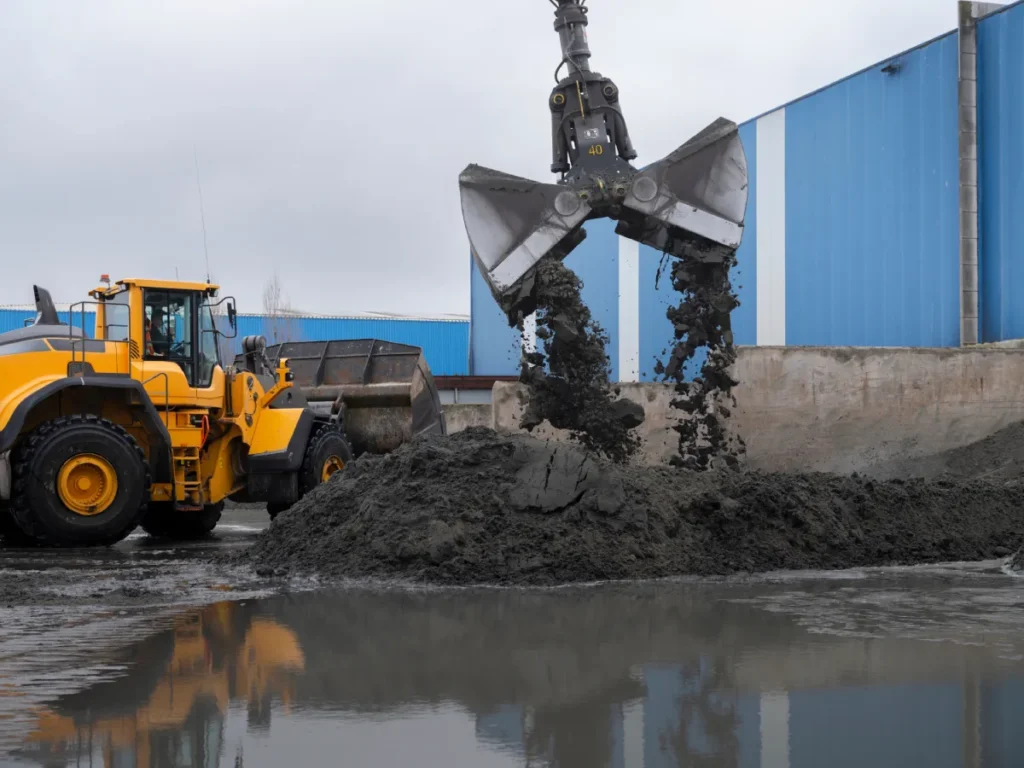
Equipment Used in Industrial Lagoon Sediment Removal
Every lagoon dredging project relies on a combination of machinery designed for precision, safety, and performance.
Hydraulic Dredges
These can be cutterhead, auger, or plain suction types. Cutterheads agitate compacted sediment before suction, augers provide precise removal, and plain suction models are ideal for soft sludge.
Excavators and Long-Reach Arms
Used when the lagoon is drained, these help remove dense or dried sludge near the edges and bottom.
Booster Pumps and Pipelines
Hydraulic dredging requires booster pumps to maintain flow in long pipelines carrying the slurry to dewatering areas.
Remote and Amphibious Systems
These advanced systems operate autonomously, offering safer and more controlled lagoon dredging for difficult lagoons.
Environmental and Safety Measures During Dredging
Industrial lagoons generally contain hazardous materials that can affect the environment if mishandled. Proper precautions ensure safe, compliant dredging operations.
- Sediment Testing: Before dredging, samples are tested for toxicity to ensure the correct disposal process is followed.
- Turbidity Control: Silt curtains or barriers prevent disturbed sediments from spreading into nearby water sources.
- Wastewater Treatment: Return water from dewatering systems is treated before discharge.
- Worker Safety: Personnel wear protective gear, and operations are monitored for gas buildup or confined-space hazards.
By combining technology with safety awareness, industries can protect both their workers and the surrounding ecosystems.
Challenges in Industrial Lagoon Sediment Removal
While modern dredging techniques have improved efficiency, challenges still exist.
1. Accessibility and Depth
Some lagoons are built in confined spaces or have steep embankments, making the mobility of equipment difficult.
2. Handling Hazardous Material
Sediments may contain chemicals or metals that require specialized containment and disposal.
3. Weather and Seasonal Factors
Rain, wind, and freezing conditions can delay dredging and slow down dewatering processes.
4. Disposal Limitations
Local regulations may restrict disposal options, requiring additional treatment or transport.
Despite these challenges, strategic planning and professional expertise make even complex dredging projects manageable.
Environmental Impact and Compliance in Industrial Lagoon Sediment Removal
Every industrial lagoon sediment removal project must balance efficiency with environmental care. Lagoons often collect not just natural sediment but also chemical residues and byproducts from industrial processes. Improper handling of this material can cause contamination in nearby soil or waterways.
To prevent this, dredging companies follow strict environmental protocols. They use equipment designed to minimize water turbidity and sediment resuspension. Collected sludge is tested, treated, and disposed of according to environmental regulations, ensuring full compliance with local and federal standards.
Sustainable dredging practices, like using geotextile dewatering bags or closed-loop water treatment systems, further reduce the project’s environmental footprint. This not only protects the surrounding ecosystem but also supports long-term industrial sustainability.
How Often Should Sediment Be Removed?
The type of waste, lagoon design, and inflow rate determine the frequency of industrial lagoon sediment removal. Most industrial lagoons require cleaning every 5 to 10 years.
However, some facilities do smaller-scale dredging every 2-3 years to ensure constant performance. Regular sludge depth tracking helps determine when cleanup is necessary.
Ultrasonic sensors and sludge judges make it simple to monitor buildup and schedule cleaning before efficiency deteriorates.
Cost Considerations and Long-Term Value
The cost of industrial lagoon sediment removal varies based on lagoon size, sludge type, and method used.
- Hydraulic dredging: $15–$30 per cubic yard
- Mechanical dredging: $25–$45 per cubic yard
- Dewatering and disposal: additional costs depending on distance and method
Although lagoon dredging might seem expensive, it prevents far costlier consequences, such as lagoon reconstruction, regulatory fines, or process downtime.
Viewed in the long term, regular maintenance is far more economical and sustainable than emergency remediation.
Innovations Shaping the Future of Lagoon Maintenance
Technology is transforming the management of industrial lagoon sediment removal.
- AI-based sludge mapping now allows pinpoint targeting of thick areas.
- Automated dredges reduce manual intervention and risk.
- Closed-loop water recycling minimizes waste during the dewatering process.
- Eco-friendly polymers help in faster solid-liquid separation.
These upgrades are making industrial lagoon sediment removal services more efficient, safer, and less intrusive, which aligns industrial operations with modern sustainability goals.
Best Practices for Sustainable Sediment Removal
- Plan early and plan well. Always start with detailed surveys and environmental analysis.
- Choose the least disruptive method. Where possible, use hydraulic or remote dredging to avoid a full shutdown.
- Protect liners and embankments. Use floating dredges or shallow suction heads.
- Monitor turbidity and effluent quality. Ensure compliance throughout the project.
- Dispose responsibly. Follow regional guidelines for hazardous or reusable sludge.
- Keep records. Document sediment volumes, dredging dates, and disposal details for audits and future planning.
Choosing the Right Partner for Industrial Lagoon Sediment Removal Projects
Selecting the right contractor for industrial lagoon sediment removal can determine the overall success of your project. A qualified lagoon sediment removal dredging company brings not only advanced equipment but also a technical skillset and knowledge to handle diverse sediment types and lagoon conditions.
Look for companies with a good track record in lagoon dredging, safety certifications, and experience in environmental compliance. It’s also helpful to choose a partner that provides end-to-end services, from sediment analysis and removal to transportation and disposal, so that you can manage the entire process seamlessly.
For dependable and sustainable results, you can count on Bayou Dredging. Our team combines specialized technology with years of industry expertise to restore lagoon capacity safely and efficiently, ensuring minimal downtime and maximum compliance with regulations.
The Road to Cleaner, More Productive Industrial Lagoons
Industrial lagoon sediment removal is much more than a maintenance task; it’s an essential part of sustaining operational reliability, compliance, and environmental stewardship. From mapping sediment layers to selecting the right dredging system, every step determines how effectively a lagoon performs in the years to come.
Whether through hydraulic dredging, mechanical excavation, or automated systems, timely sediment removal ensures lagoons remain functional, efficient, and safe. In a world where industries are moving toward cleaner, more sustainable practices, maintaining healthy lagoons is a small yet powerful step toward long-term environmental responsibility.Ensure your lagoon systems operate at peak efficiency with expert dredging support. Contact Bayou Dredging today to schedule a consultation or learn more about our industrial lagoon sediment removal
